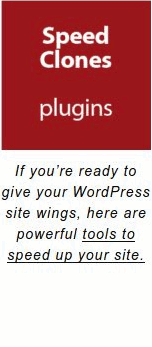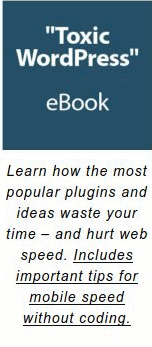- Post-COVID Financial Reassessment: After an initial surge in spending during the COVID-19 pandemic, there has been a subsequent reduction in expenditure on web services, including performance optimization, as businesses reassess their financial commitments and seek to optimize costs.
- Google’s Algorithm Change and Its Aftermath: The 2021 change in Google’s algorithm, which included web performance parameters, led to a temporary increase in spending on optimization services. However, since this change did not significantly impact rankings for many sites, it possibly led to disillusionment about the benefits of speed optimization, thus reducing the incentive for further investment in this area.
- Economic Uncertainty: The global economic situation has made businesses and website owners more cautious, likely impacting their willingness to invest heavily in website performance optimization.
- WordPress Ecosystem Changes: The introduction of the Gutenberg editor and a decline in active plugin installations suggest a shift in user preferences within WordPress. This shift might influence spending habits, with a potential decrease in investments in performance optimization plugins or services.
- LiteSpeed Servers Adoption: The increasing adoption of LiteSpeed servers, known for their efficiency in web performance, introduces a significant factor. LiteSpeed’s default settings simplify performance optimization, potentially reducing the need for extensive external optimization services or plugins. This could lead to businesses relying more on server-level optimization rather than investing in additional performance optimization services.
SERVER TECHNOLOGY TRENDS
As of 2023, the market share of various web servers is as follows:
- NGINX holds a 34.4% market share of all active sites, particularly favored by websites with heavy traffic loads.
- Apache maintains a substantial share of 31.9%, attributed to its long-standing presence in the market.
- LiteSpeed has a market share of 11.9% and has been gaining rapid traction
These figures indicate the relative popularity and usage of these web servers across websites globally.
FORECAST
- Short-Term: In the immediate future, the combination of economic conditions, disillusionment from past investments in web performance, and changes in the WordPress ecosystem, along with the ease of optimization provided by LiteSpeed servers, may lead to a more cautious or reduced spending trend in WordPress website performance optimization.
- Long-Term: Over time, as the market adjusts to these changes and businesses continue to recognize the importance of web performance for user experience and SEO, there may be a gradual increase in spending. However, this increase might be more balanced, with a focus on cost-effective solutions like LiteSpeed servers that offer efficient performance optimization without significant additional investment.
While the broader CMS market is growing, specific expenditure on WordPress website performance optimization is currently influenced by a complex mix of technological advancements, such as the adoption of LiteSpeed servers, economic factors, and shifts within the WordPress ecosystem. This mix leads to a nuanced and potentially fluctuating trend in spending on WordPress website performance optimization.
Who cares about speed?
So why worry about speed if it is not a ranking issue for Google? Speed is the first barrier to good user experience. People are just as impatient as ever. Making them wait for a page to load is frustrating and annoying. This affects how they feel about the quality of your site — and the quality of your content and offerings. This phenomenon is know as the halo effect.
The halo effect occurs when our overall positive impression of a person, product, or brand is based on a single characteristic. If our first impression is positive, the subsequent judgments we make will be colored by this first impression. This occurs even if subsequent usability problems arise. They tend to forgive the mistake if their first impression was a good one. In other words, not having to wait makes the audience more forgiving of errors like bad button placement or even typos.
Godspeed-
![]()
Steve Teare
performance engineer
May 2024
PagePipe Site Tuning Services for Speed
Instead of band-aid approaches, we drill down to the root cause of your slow site. This is origin optimization. Also known as site tuning. To do this, we analyze site components:
- Hosting
- Theme
- Plugins
- Scripts and third-party services.
- Images and media library.
- We minimize globally loading plugin effects.
Find out more details about Site Tuning – Get Speed!






